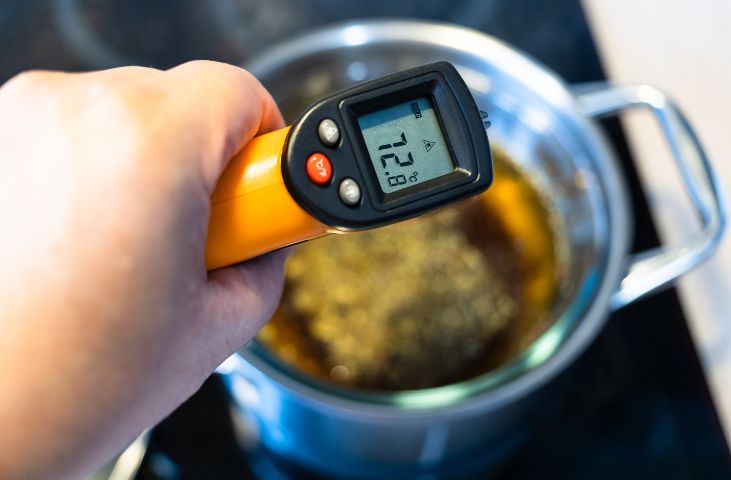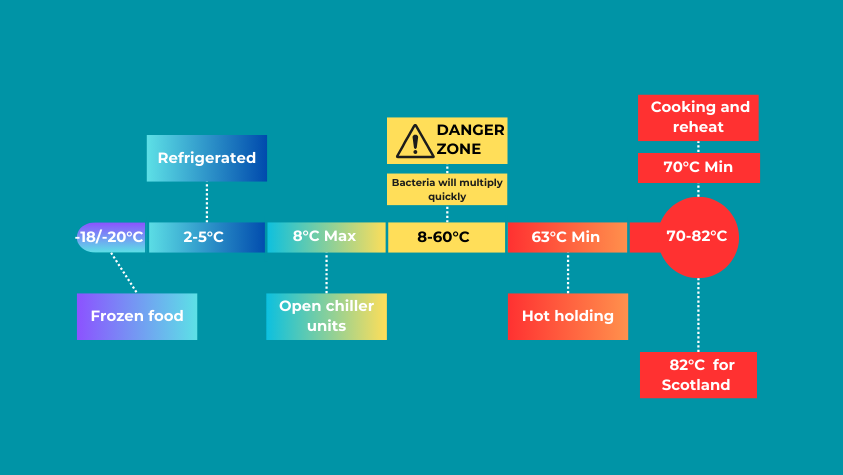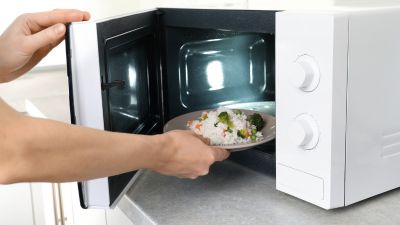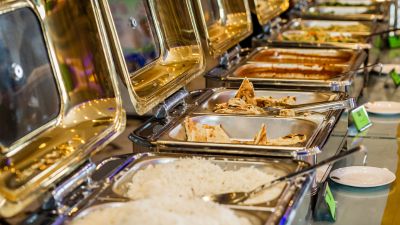The Food Hygiene Danger Zone

Estimated reading time: 6 minutes
The Food Hygiene Danger Zone
Whether you’re a professional chef or a home cook, understanding how to store, reheat and cook food is fundamental to maintaining good food safety practices. At the heart of these practices lies the concept of the food hygiene danger zone. This zone is a critical temperature range where food is most vulnerable to the rapid multiplication of harmful bacteria such as Salmonella, E. coli and Listeria. These bacteria often lead to foodborne illnesses, posing significant health risks.
This article looks at the food hygiene danger zone in more detail, highlighting its importance, the associated risks and effective strategies to keep your food safe and ideally outside this danger zone.
What is the Food Hygiene Danger Zone?
The Food Standards Agency (FSA) defines the temperatures of the food hygiene danger zone as between 8°C and 60°C. It’s important to keep food outside of this range to prevent the rapid multiplication of bacteria, which may be a health hazard. Foods are safest when they are either kept frozen, refrigerated below 8°C or heated above 70°C. Bacteria cannot survive or function effectively above 60°C and their growth is significantly slowed below 8°C. However, freezing does not kill bacteria; it merely halts their growth. Therefore, when food is thawed, it’s essential to take additional steps, such as cooking it thoroughly, to ensure it’s safe for consumption.
The potential consequences of consuming contaminated food that has been left in the food hygiene danger zone range from mild discomfort to severe, potentially life-threatening conditions. This is especially true for high-risk groups like young children, the elderly and individuals with weakened immune systems, who are more susceptible to the effects of foodborne pathogens.
This image identifies the food hygiene danger zone temperature range (yellow section):

With knowledge of the food hygiene danger zone, you can implement a variety of strategies to ensure that food is stored, handled and consumed safely above or below the danger zone and prevent the growth of harmful bacteria.
Reheating Food
When reheating food you should follow these tips to avoid the food hygiene danger zone:
- Reheat food to a minimum of 70°C, ensuring that every part of the dish reaches this safe temperature. Using a food thermometer is a reliable way to check that food has reached this minimum temperature.
- Choose reheating methods like an oven, hob or microwave that distribute heat evenly and efficiently.
- Avoid slow heating techniques, as they can leave food in the danger zone for too long, promoting bacterial growth.
- Once food is reheated, it should be eaten immediately or kept above 60°C.

Food Temperature Consistency
To ensure that food remains out of the food hygiene danger zone you should:
- Keep cold foods at or below 5°C so bacterial growth is slowed. The ideal refrigerator temperature is usually between 1°C and 5°C.
- Ensure food removed from the fridge is not left out for longer than 2 hours.
- Ensure that perishable foods are refrigerated promptly after purchase or use.
- Hot food should not be kept out for longer than 1 hour and ideally maintained at 60°C or higher to stay safely outside of the food hygiene danger zone. Equipment designed for buffet settings and professional kitchens can help maintain these temperatures and ensure food remains safe to consume.

Recommended Cooking Times
To ensure the safety of your food and the elimination of foodborne bacteria, it’s important to cook different types of food to their recommended internal temperatures to keep them out of the food hygiene danger zone. These temperatures vary by food type and are outlined below.
- Eggs and ground meat should reach 71°
- Fish, beef, pork, lamb and veal are safe at 62°C.
- Poultry, game birds and casseroles require a minimum temperature of 74°C to ensure safety.
By inserting a thermometer into the centre or thickest part of the food, whether it’s the middle of a dish or the thickest part of a piece of meat, you can ensure it’s cooked safely beyond the food hygiene danger zone. Visual cues like changes in colour, such as chicken turning from pink to white and texture changes can also indicate that it is thoroughly cooked, but they are not as reliable as temperature checks.
To ensure the safety of frozen or chilled items, it’s essential to regularly monitor the temperature of the freezer storage unit. As part of a food business’s Hazard Analysis and Critical Control Points (HACCP) procedures, checking and recording the freezer’s temperature daily is a key practice for maintaining due diligence and food safety standards.
Implementing Best Food Safety Practices
It is important to implement best practices in food handling and storage that reduce bacterial growth along with understanding the food hygiene danger zone and keeping food outside this temperature range. These additional best practices include:
- Regular hand washing.
- Using separate cutting boards for raw and cooked foods to prevent cross-contamination
- Adhering to recommended storage times and optimal temperatures.
- Training staff in Food Hygiene Level 2 training so they can learn more about safely storing, cooking and working with food in a food business.
Conclusion
In the daily routines of cooking, cooling and reheating food, as well as storing and working with food, it is important to understand the food hygiene danger zone. This specific temperature range is crucial for preventing the growth of harmful bacteria and minimising the risk of foodborne illnesses.
Throughout this article, we’ve looked at the importance of recognising this critical temperature range and explored various methods and recommended proactive approaches to ensure food safety, emphasising the need to keep food out of the food hygiene danger zone. By applying the knowledge and strategies discussed, we can contribute to safer food handling practices, protecting ourselves and others from the potential hazards of foodborne illnesses.
Online Food Hygiene Courses
Our online food hygiene courses are RoSPA assured and look at the theoretical aspects of food hygiene but also provide actionable insights and best practices that can be immediately applied in any food-related setting and ensure you maintain the highest standards of food hygiene.
Our friendly customer support team is always happy to talk through your food hygiene training options. Why not give us a call on 01327 552136, email us at hello@smarthorizons.co.uk, or use the live chat feature on this website to speak to us during office hours. We’re here to help from 9am to 5.30pm, Monday to Friday.
Related Links
